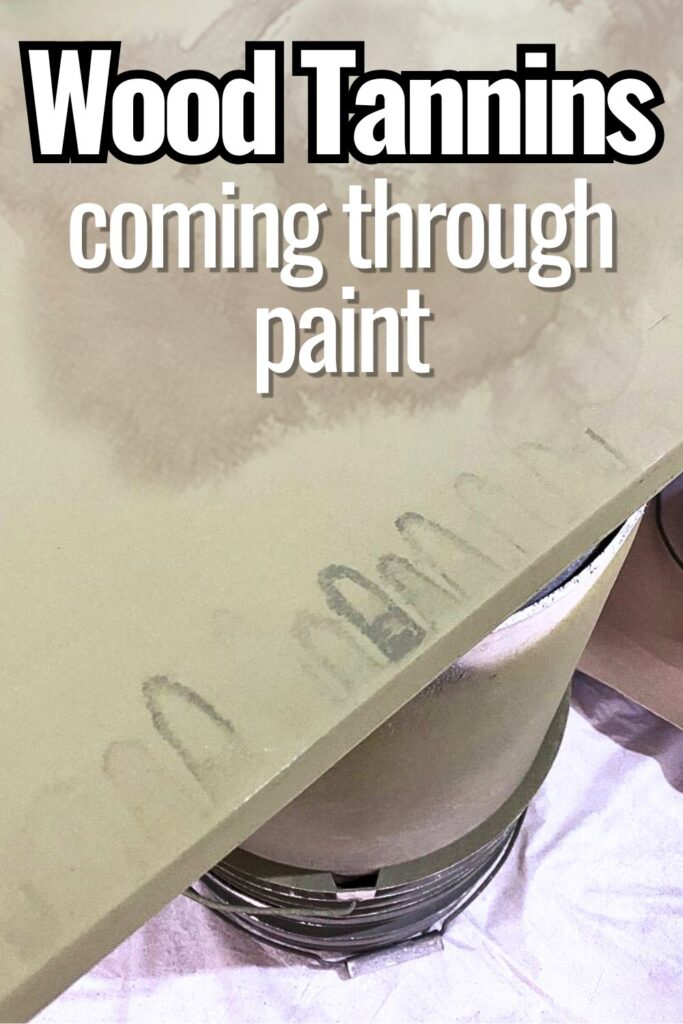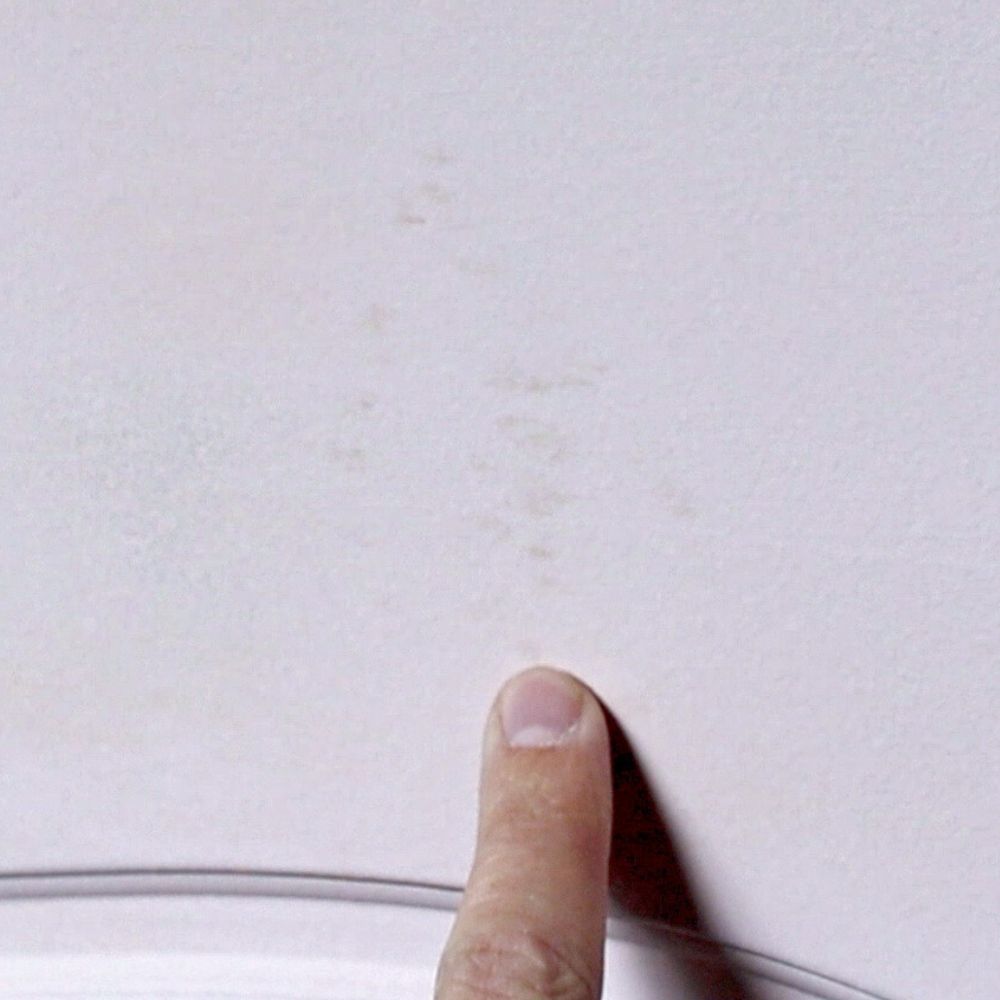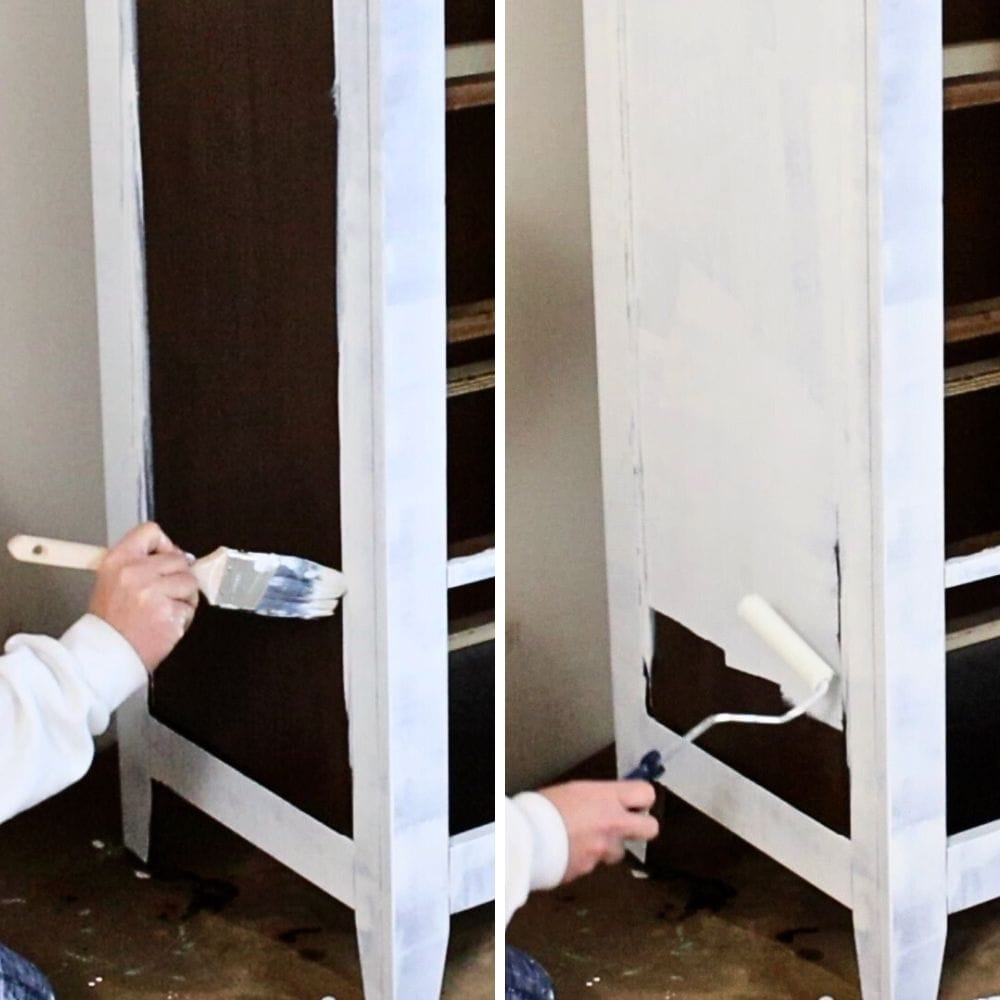Wood Tannins Coming Through Paint
Today, we’re discussing a common issue that many DIY painters face: wood tannins coming through paint. If you’ve ever noticed a yellow or brownish discoloration on your painted furniture, it’s likely due to tannins in the wood causing a reaction with your paint.
So we’ll walk you through the best painting techniques for furniture to prevent tannins from ruining your beautiful paint job.

Before we dive into the specifics of how to avoid wood tannins that come through paint, let’s first understand what exactly tannins are. Tannins are substances found in the sap, bark, and leaves of certain trees. When wood is cut or exposed to moisture, these tannins can seep out and cause discoloration in paint.
If you use products that don’t help block tannins, you may end up with unsightly stains on your painted furniture. Let’s dive further into how wood tannins can affect your painting project.
How Do Wood Tannins Affect Painted Surfaces?
We’ve mentioned that tannins bleed through paint, but they also have the ability to bleed through layers of paint. This means that even if you apply multiple coats of paint, those pesky tannins can still make their way through and ruin your final result.
This is especially true for lighter colored paints, where any discoloration will be more noticeable. They cause an uneven finish, with some areas appearing darker or more discolored than others.

This can be incredibly frustrating for those who have put in time and effort to create the perfect painted furniture piece. So it’s important to prevent tannins from appearing in the first place.
Tips for Preventing Tannin Stains
Luckily, there are several techniques you can use to prevent tannins from making an unwelcome appearance on your painted furniture.
Properly Preparing Wood Before Painting
Preparing your wood furniture before painting is important to avoid getting tannin stains. This includes cleaning the surface to remove any dirt, dust, or grime that could interfere with the paint’s adhesion.
You should also sand down any rough areas or imperfections to create a smooth surface for painting. This will also help the paint adhere better.
As an Amazon Associate, I earn from qualifying purchases. I also may earn from other qualifying purchases with other companies or get free product to review and use. All opinions are my own.
Using Stain Blocking Primer
But the key to preventing wood tannins from coming through paint is to use a stain blocking primer. These primers are specifically formulated to block tannin stains and guarantee that your final paint job looks flawless.
When purchasing a stain blocking primer, look for one that is oil-based or shellac-based. These tend to be the most effective at blocking tannins.

If you’re unsure of whether or not a stain blocking primer is necessary, it’s better to err on the side of caution and use one. It may add an extra step to your painting process, but it will save you time and frustration in the long run.
Here’s our list of the best primers to stop tannin bleed to learn more about the pros and cons of each product and help you decide which one is best for your next project!
How to Apply Stain Blocking Primer
After you have prepped your wood furniture and chosen a stain blocking primer, it’s time to apply it. Apply a thin layer of primer over the entire surface of your piece using a high-quality brush or roller.

Make sure to cover all areas evenly and get into any crevices or hard-to-reach areas. Allow the primer to dry completely.
One coat of primer should do the trick in most cases, but if you want extra assurance that those tannins won’t bleed through, apply a second coat. After the final coat of primer has dried, you’re ready to paint.
Can I use a water-based stain blocking primer instead of an oil-based one?
While water-based primers may work in some cases, they are generally not as effective at preventing tannin stains as oil-based or shellac-based primers. Again, we recommend using an oil-based or shellac-based primer for the best results!
Removing Tannin Stains
But what if you’ve already finished painting and noticed tannin stains appearing? Well, this depends on whether or not you have applied any topcoat for painting furniture.
If you haven’t applied a topcoat yet after painting, you can simply apply a stain blocking primer over the painted surface. Make sure to apply at least 2 coats and allow for proper drying time before painting again.

However, if you have already applied a topcoat like water-based poly, you will need to take extra steps.
First, let the topcoat dry completely and then lightly scuff sand the surface. This will create a better base for your stain blocking primer to stick to. Then, apply at least 2 coats of primer and let it dry before painting over it again. Don’t forget to seal painted furniture to protect your finished project and make it durable for years to come!
Are certain types of wood more prone to tannin stains?
Yes, certain types of wood are more prone to tannin stains due to their higher levels of tannins. Oak, cedar, walnut, and some mahoganies are common high tannin woods, so if your furniture is made of these materials, it’s important to take extra precautions to prevent tannins from ruining your paint job.

However, it’s also worth noting that even low tannin woods can still have enough tannins to cause discoloration in the paint. So while it’s always a good idea to be aware of the type of wood you are working with, it’s still best to do tannin stain prevention regardless of the wood furniture you have.
How long does it take for tannin stains to appear?
Tannin stains can appear within a few hours after painting or several days later. It all depends on how many tannins are present in the wood and how quickly they seep through the paint layers. In some cases, tannin stains may not show up until months later, when the furniture is exposed to moisture or humidity.
This makes it even more important to take preventative measures against tannin stains when painting furniture. Tannin stains can be a frustrating and unsightly problem when painting your furniture.
However, with proper preparation, the use of stain blocking primer, and awareness of high tannin woods, you can easily prevent these stains from occurring. And if they do happen to show up, there are still steps you can take to fix them to end with a flawless and successful painted piece.
More Priming Furniture Tips
Follow us on YouTube to get more tips for painting furniture.
Or share your project with us on our Facebook Group and be part of our community. See you there!
